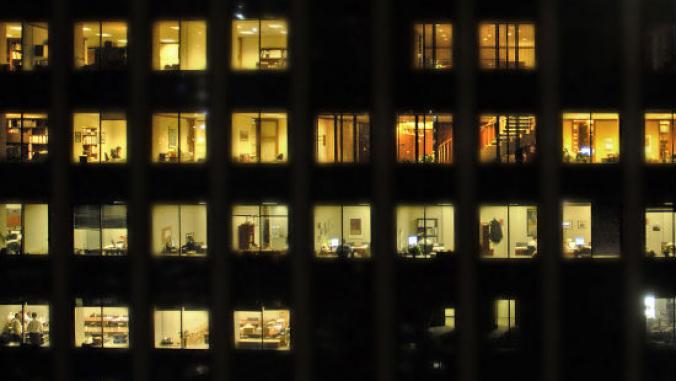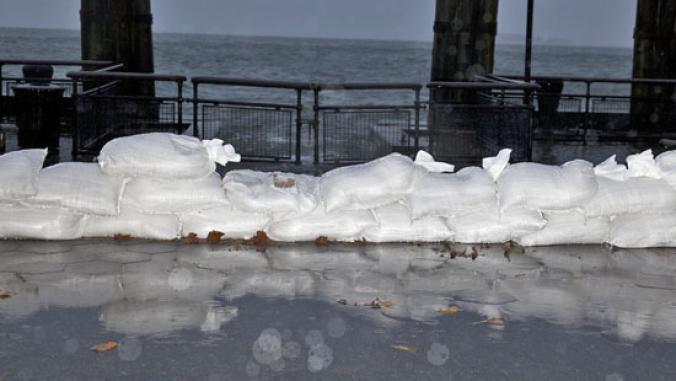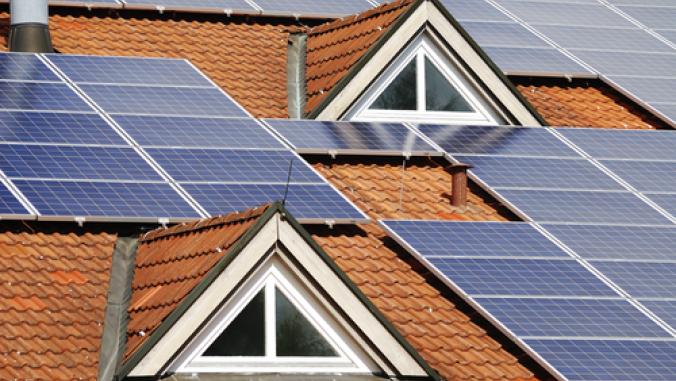The Green Finance Outlook: Bullish on Commercial Properties
<p>Over the past two weeks, the Obama Administration has unveiled policy proposals affecting green real estate that have left me cheering in one case and gravely concerned in another.</p>

U.S. government policy is a key driver for green real estate in numerous arenas, including the funding of research and development for building energy efficiency innovations [PDF], standards development (EPA developed Energy Star and the DOE funded some of the early development of LEED), and financing and tax policies that influence the health of the green building industry.
As of February 2011, federal real estate finance and tax policy are at the fore, with the release of President Barack Obama's 2012 federal budget. Over the past two weeks, the Obama Administration has unveiled policy proposals that have left me cheering in one case and gravely concerned in another.
Two enthusiastic thumbs up for the administration's proposed Better Buildings Initiative, announced on February 3. Better Buildings seeks a 20 percent improvement in commercial building energy efficiency by 2020, leading to an estimated $40 billion annual cost savings for property owners and tenants.
To this end, the administration would convert the current $1.80 per square foot deduction for commercial energy-saving improvements to a tax credit. A credit would allow building owners to reduce their income tax obligations dollar for dollar when they undertake an energy retrofit, a far more powerful financial incentive than the deduction currently in force. The administration estimates that the proposal could result in a ten-fold increase in energy efficiency retrofits for commercial buildings.
Better Buildings also proposes the creation of a Building Construction Technology Extension Partnership to provide workforce training in energy auditing and building operations; a pilot program for Department of Energy guarantees for energy efficiency upgrades at hospitals and schools and other commercial properties; and competitive grants to state and local governments for energy retrofit programs, an initiative tagged "Race to Green."
Unfortunately, the finance news is hardly so promising on the residential property front. The PACE controversy is still tied up in the courts with little hope of near term resolution, despite strong consumer interest in PACE programs. Another blow to the residential finance market came on February 11, with the administration's recommendation to wind down Fannie Mae and Freddie Mac, the two secondary housing finance giants now under federal conservatorship.
While the administration's report contains worthwhile suggestions for strengthening these enterprises (among them, increasing equity capital requirements, imposing more conservative mortgage loan limits, and setting higher down payment requirements for borrowers), the key recommendation is a gradual winding-down of Fannie and Freddie {PDF] and a handover of the U.S. secondary mortgage finance system to the private capital markets.
While the administration is correct about the need to reform Fannie and Freddie (among other things, they should establish standards for PACE program participation), the proposed shutdown is dangerous stuff. The administration's proposal rests on the assumption that the recently enacted Dodd-Frank financial reforms (summary PDF) will create sufficient protections in the mortgage and securities markets to protect borrowers, lenders and taxpayers from another mortgage meltdown. That assumption is untested and unrealistic, especially in light of proposed freezes in federal domestic spending that could prevent enforcement of Dodd-Frank.
The administration's wind-down proposal also assumes that Wall Street would provide sufficient mortgage market liquidity in times of credit market distress. There's no evidence for this optimism, as witnessed by the credit market freeze of the past 30 months. It bears remembering that Fannie Mae was created in 1938 to provide liquidity to the mortgage sector when the private capital markets were unable to do so.
What's the probable impact of shutting down Fannie and Freddie? Fewer 30-year, fixed-rate mortgages (because the capital markets may shy away from taking longer-term risk); higher mortgage interest rates for consumers as liquidity is reduced; lower housing prices as financing becomes more expensive; and greater revenue streams for the investment banks that would take over the secondary mortgage market function.
That will certainly create jobs on Wall Street, but the average American family owns one significant asset: their home. And as the family home becomes more difficult to finance and to sell, Main Street and economic growth will suffer. In the sustainable housing arena, that is likely to mean fewer energy efficiency retrofits and reduced consumer enthusiasm for renewables and green features.
Is there a better way? The National Association of Realtors recommends turning Fannie and Freddie into government-chartered nonprofits, an approach that deserves a closer look and which could incorporate many of the administration's proposed reforms.
My green real estate finance outlook for February: bullish on commercial properties, bearish on the residential sector.
Image CC licensed by Flickr user Metric Centric.





